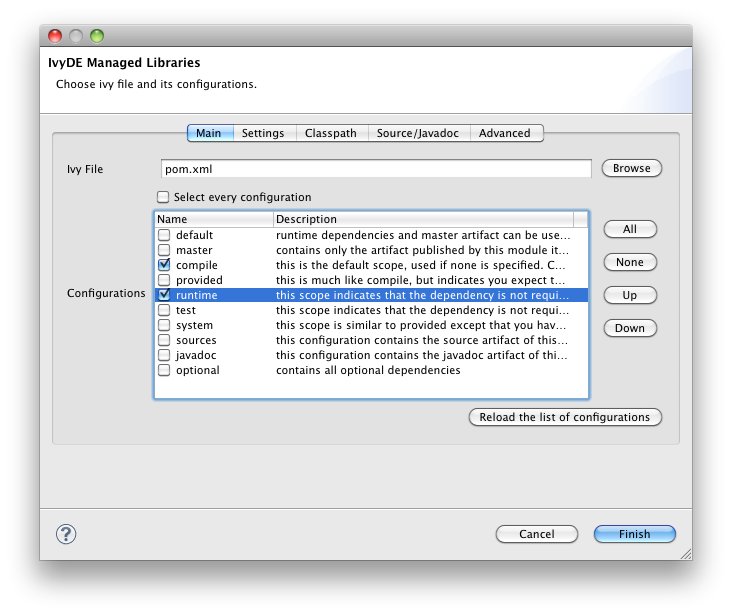Apache Httpclient Download File Sample
Python Works on v2.7.6 or later. Requires the library. Getting Started This tutorial will show you how to use the Zamzar API to convert a file to a different file format. There are only three short steps involved: • • • NOTE: All example requests are made to If you want to use the production environment change the endpoint to In this example, we’ll assume that you want to convert an image from GIF to PNG. All curl requests can be made from a shell (Linux) or a Terminal (Mac) – on Windows you can and run it from a command prompt.
Obtain an API key Every request to the Zamzar API must include a key, so that we can identify you. Once you have, you can get an API key by visiting the of your developer portal. Let’s see this in action and test your key by sending a simple API request. To do so, you can send a request to inspect the GIF file format. Issue a GET request to the formats/gif endpoint. Use HTTP basic authentication, specify your API key as the username, and leave the password blank. • • • • • • •.

Jul 25, 2017. To use this library add a dependency to your Maven or Gradle build file. You find the. Download the HttpClient libraries from the Apache Website, you can download the 'bin' package it includes all dependencies. Create a new. The following is an example an HTTP Get request via HttpClient. In this tutorial you will learn how to download file from URL using Apache HttpClient request. Data Rescue 3 Free Download Mac more. In this example we make a http request to server location and download.
Require 'net/https' require 'net/http/post/multipart' require 'json' api_key = 'GiVUYsF4A8ssq93FR48H' endpoint = 'source_file = '/tmp/portrait.gif' target_format = 'png' uri = URI(endpoint) Net::HTTP.start(uri.host, uri.port,:use_ssl =>true) do http request = Net::HTTP::Post::Multipart.new( uri.request_uri, 'source_file' =>UploadIO.new(source_file, 'image/gif'), 'target_format' =>target_format ) request.basic_auth(api_key, ') response = http.request(request) puts JSON.parse(response.body) end. Curl -u GiVUYsF4A8ssq93FR48H: -L >converted.png Next steps We’ve covered the essentials of the Zamzar API in this tutorial. Most workflows, however, require a couple of extra steps. For example, you might want to: • from our servers once you’ve finished converting a file. • Convert files from, or from. • if you realise that you’ve selected the wrong target format. You might also like to explore our: we provide all of the code that you'll need to get started with our most popular types of file conversion.
The following Java code example assumes that the URL for the pertinent file data resource is import java.io.File; import java.io.FileOutputStream; import java.io.IOException; import java.io.InputStream; import org.apache.commons.httpclient.Header; import. Download 'Binary' package of the latest HttpClient 4.5 release or configure dependency on HttpClient and Fluent HC modules using a dependency manager of your choice as described here. HttpClient 4.5 requires Java 1.5 or newer. The below code fragment illustrates the execution of HTTP GET and.
Once you’ve tested your client code, you should start using the production environment ( api.zamzar.com) rather than the test environment ( sandbox.zamzar.com) used in this tutorial. The production environment uses credits from your monthly subscription to allow you to convert larger files and store your files on our servers for longer periods of time. Reference Our API is RESTful and speaks JSON. Authentication All requests are made over HTTPS using HTTP Basic authentication. Use your API key as the username.
No password is required. • • • • • • •. Example Custom Header Response HTTP/1.1 200 OK.
Zamzar-Test-Credits-Remaining: 3 Zamzar-Credits-Remaining: 18. Errors When a response contains a 4xx or 5xx response code, the body of the request will contain one or more error objects.
An error object comprises: • message (string) – a description of the error • code (integer) – a unique identifier for the type of error • context (object) – (included only for some error codes) further information about the cause of the error Note that while we might change the message we return for particular type of error, we will not change the error code. Example JSON Response. Curl -u GiVUYsF4A8ssq93FR48H: -L >converted.png Troubleshooting If you receive an HTTP 400 (Bad Request) response from the files/ID/content endpoint, this might indicate that your code is re-sending HTTP authorisation headers when following a redirect. To fix this issue, ensure that your code does not reuse HTTP headers for redirects, or use the sample code included in this documentation (which automatically prevents this). Deleting a file If you want to remove our copy of one of your files, issue a DELETE request to the files/ID endpoint. The response will contain the metadata for deleted file, but not its content. • • • • • • •.
$url, 'filename' =>$filename ); $ch = curl_init(); // Init curl curl_setopt($ch, CURLOPT_URL, $endpoint); // API endpoint curl_setopt($ch, CURLOPT_CUSTOMREQUEST, 'POST'); curl_setopt($ch, CURLOPT_POSTFIELDS, $postData); curl_setopt($ch, CURLOPT_RETURNTRANSFER, true); // Return response as a string curl_setopt($ch, CURLOPT_USERPWD, $apiKey. ':'); // Set the API key as the basic auth username $body = curl_exec($ch); curl_close($ch); $response = json_decode($body, true); echo 'Response: n--------- n'; print_r($response). Require 'net/https' require 'net/http/post/multipart' require 'json' api_key = 'GiVUYsF4A8ssq93FR48H' endpoint = 'source_file = '/tmp/portrait. O2jam Download Full Client Philippines there. gif' target_format = 'png' uri = URI(endpoint) Net::HTTP.start(uri.host, uri.port,:use_ssl =>true) do http request = Net::HTTP::Post::Multipart.new( uri.request_uri, 'source_file' =>UploadIO.new(source_file, 'image/gif'), 'target_format' =>target_format ) request.basic_auth(api_key, ') response = http.request(request) puts JSON.parse(response.body) end. $sourceFile, 'target_format' =>$targetFormat ); $ch = curl_init(); // Init curl curl_setopt($ch, CURLOPT_URL, $endpoint); // API endpoint curl_setopt($ch, CURLOPT_CUSTOMREQUEST, 'POST'); curl_setopt($ch, CURLOPT_POSTFIELDS, $postData); curl_setopt($ch, CURLOPT_RETURNTRANSFER, true); // Return response as a string curl_setopt($ch, CURLOPT_USERPWD, $apiKey.